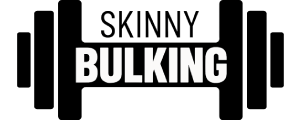Building muscle is a journey that requires a lot of dedication, hard work, patience, and discipline. However, with the right strategy, you can maximize your gains and reach your goals in a shorter amount of time. Whether you are looking to bulk up or simply tone your muscles, the following tips will help you unlock your muscle-building potential and achieve your desired results. In this post, we’ll be covering three tips that are guaranteed to help you build muscle faster. From optimizing your workout routine and nutrition to getting enough rest and recovery, we’ll explore the best ways to get the most out of your muscle-building efforts. So, whether you’re a seasoned athlete or new to the game, read on to discover how you can unlock your muscle-building potential and transform your body in no time!
1. The basics of building muscle: what you need to know

Image: pexels
Building muscle is a process that requires patience, consistency, and dedication. To start, you need to understand the basics of building muscle. First and foremost, you need to consume enough calories to support muscle growth. This means eating a balanced diet that’s rich in protein, carbohydrates, and healthy fats.
Protein is the building block of muscle, so it’s important to consume enough of it every day. Aim for at least 1 gram of protein per pound of body weight to support muscle growth. Carbohydrates are also essential for energy during workouts, while healthy fats help with hormone production and overall health.
In addition to nutrition, you need to have a solid workout routine that focuses on resistance training. This means lifting weights or using resistance bands to challenge your muscles and stimulate growth. Start with compound exercises that work multiple muscle groups at once, such as squats, deadlifts, and bench presses.
Finally, recovery is just as important as exercise and nutrition. Your muscles grow and repair during rest periods, so be sure to get enough sleep and take rest days in between workouts. Stretching, foam rolling, and massage can also help with recovery and prevent injury.
By focusing on these basics, you can start your muscle-building journey on the right foot and set yourself up for success. Remember, building muscle takes time and effort, but with consistency and dedication, you can unlock your full potential and achieve your goals.
2. The importance of nutrition in muscle building
When it comes to building muscle, nutrition plays a crucial role. You can spend hours in the gym lifting weights, but if you’re not fueling your body with the right nutrients, you won’t see the desired results.
Protein is an essential nutrient for muscle building. It’s important to eat enough protein to repair and rebuild muscle tissue. Aim to consume at least 1 gram of protein per pound of body weight.
Carbohydrates are also important for muscle building. They provide energy for your workouts and help replenish glycogen stores after exercise. Focus on complex carbohydrates like whole grains, fruits, and vegetables.
Don’t forget about healthy fats. They help to maintain hormone levels and aid in the absorption of vitamins and minerals. Incorporate sources of healthy fats like nuts, seeds, avocado, and olive oil into your diet.
It’s also important to stay hydrated. Water is essential for muscle function and aids in digestion and nutrient absorption. Aim to drink at least 8-10 glasses of water per day.
Remember, nutrition is just as important as exercise when it comes to building muscle. Fuel your body with the right nutrients and you’ll be on your way to unlocking your muscle building potential.
3. The role of resistance training in muscle building
Resistance training, also known as strength training, is an essential element in muscle building. When you perform resistance exercises, you are putting your muscles under stress, which causes microscopic tears in the muscle fibers. This may sound counterproductive, but it’s actually what helps to build muscle.
When the body repairs these micro-tears, it rebuilds the muscle fibers stronger and denser than before. Over time, this process results in increased muscle mass and strength.
It’s important to note that resistance training doesn’t just involve lifting heavy weights. Bodyweight exercises, resistance bands, and even household items like water bottles or cans can be used for resistance training.
In addition to building muscle mass, resistance training can also improve bone density, metabolism, and overall fitness levels. It’s recommended to do resistance training at least 2-3 times per week, with a focus on targeting all major muscle groups.
Remember to start with lighter weights and gradually increase the load as your strength improves. Proper form is also crucial for avoiding injury and getting the most out of each exercise. With consistency and dedication to resistance training, you can unlock your muscle-building potential and achieve your fitness goals.
4. Three tips to build muscle faster
Building muscle can be a daunting task, especially if you’re new to the gym or have been struggling to see results. To help you unlock your muscle building potential, here are three tips to build muscle faster:
1. Lift Heavy and Focus on Compound Exercises – Compound exercises are multi-joint movements that work multiple muscle groups at once. Examples include squats, deadlifts, bench press, and pull-ups. These exercises are great for building overall strength and muscle mass. Additionally, lifting heavy weights with low repetitions can help stimulate muscle growth.
2. Get Enough Protein in Your Diet – Protein is essential for muscle growth and repair. Aim to consume at least 1 gram of protein per pound of body weight per day. Good sources of protein include chicken, fish, lean beef, eggs, and protein shakes.
3. Focus on Recovery – Rest and recovery are just as important as exercise when it comes to building muscle. Muscles grow and repair during rest periods, so it’s important to give your body enough time to recover between workouts. Additionally, getting enough sleep, staying hydrated, and stretching can also help with muscle recovery.
Incorporating these tips into your fitness routine can help you build muscle faster and see better results. Remember to be patient and consistent, as building muscle takes time and dedication.
5. Tip #1: Increase your protein intake

Image: pexels
If you’re looking to build muscle faster, increasing your protein intake is a must. Protein is the building block of muscle and is essential for muscle growth and repair. Without enough protein, your muscles won’t have the necessary resources to repair themselves, leading to slower growth and potentially even muscle loss.
The recommended daily protein intake for muscle building is around 1 gram per pound of body weight. This means that if you weigh 150 pounds, you should aim for around 150 grams of protein per day. It’s important to note that this is just a guideline and your individual needs may vary depending on your body composition and activity level.
To increase your protein intake, focus on incorporating protein-rich foods into your diet such as lean meats, eggs, dairy products, and plant-based sources like beans and lentils. You can also supplement with protein powder to ensure you’re getting enough protein throughout the day. Whey protein is a popular option for post-workout recovery, while casein protein is a slower-digesting option that can help provide a sustained release of amino acids to your muscles.
Remember, while protein is essential for muscle building, it’s important to maintain a balanced diet that includes carbohydrates and healthy fats as well. Don’t rely solely on protein supplements or neglect other important nutrients in your diet. By increasing your protein intake and choosing quality protein sources, you can give your muscles the fuel they need to grow and build strength faster.
6. Tip #2: Focus on compound exercises
If you’re looking to build muscle faster, it’s important to focus on compound exercises. Compound exercises are movements that work multiple muscle groups at once. Examples of these types of exercises include squats, deadlifts, bench press, pull-ups, and rows.
These exercises are important because they allow you to lift heavier weights and stimulate more muscle fibers in a shorter amount of time. This means that you’ll be able to make strength gains and build muscle faster.
In addition, compound exercises are also more functional and mimic movements that you perform in everyday life. This can help you build strength that carries over into your daily activities and sports.
That being said, it’s important to also include isolation exercises in your workout routine. Isolation exercises target specific muscle groups and can help you build muscle in areas that may be lagging behind. Just make sure to prioritize compound exercises first in your workout routine.
7. Tip #3: Incorporate progressive overload
Tip #3 to build muscle faster is to incorporate progressive overload into your training routine. Progressive overload is the gradual increase in stress placed on your muscles during exercise over time.
This technique can be achieved in a variety of ways, such as increasing the weight lifted, increasing the number of repetitions, or reducing the amount of rest between sets. By challenging your muscles in this way, you force them to adapt and grow.
It’s important to note that you should aim for gradual progress rather than trying to lift the heaviest weight possible right away. This not only reduces the risk of injury but also ensures that your muscles have time to properly recover between workouts.
To incorporate progressive overload into your routine, keep track of your progress and set achievable goals. For example, if you’re currently lifting 50 pounds for 8 reps, aim to lift 55 pounds next week for the same number of reps. This way, you can gradually increase the stress placed on your muscles and continue to build strength and muscle mass over time.
8. Common mistakes to avoid when trying to build muscle
When it comes to building muscle, there are some common mistakes that many people make that can hinder their progress. It’s important to be aware of these mistakes so that you can avoid them and maximize your muscle building potential.
One common mistake is not getting enough rest and recovery time. Your muscles need time to recover and repair after a workout, and if you don’t give them enough rest, you won’t see the results you’re looking for. Make sure you’re giving your muscles at least 48 hours of rest between workouts and getting plenty of sleep each night to aid in the recovery process.
Another mistake is not focusing on compound exercises. Compound exercises work multiple muscle groups at once and are more effective for building muscle than isolation exercises. Make sure your workouts include exercises like squats, deadlifts, bench press, and pull-ups to target multiple muscle groups.
Lastly, not following a proper nutrition plan can also hinder your muscle building progress. You need to be consuming enough calories and protein to support muscle growth and repair. Make sure you’re eating a balanced diet with plenty of lean protein, complex carbohydrates, and healthy fats, and consider tracking your macros to ensure you’re hitting your targets.
By avoiding these common mistakes, you’ll be on your way to building muscle faster and unlocking your full muscle building potential.
9. How to track progress and adjust your program
Tracking your progress is crucial for building muscle faster. It helps you see what is working and what isn’t, so you can make adjustments to your program accordingly.
One way to track your progress is by taking measurements of your body, such as your weight, body fat percentage, and measurements of specific muscles. This will give you a baseline to work from and allow you to track changes over time.
Another way to track progress is by keeping a workout log. This can be done on paper or through an app on your phone. It allows you to keep track of what exercises you’ve done, how much weight you lifted, and how many sets and reps you completed. By tracking your workouts, you can make sure you are progressively overloading your muscles, which is necessary for building muscle.
Adjusting your program is also important for building muscle faster. If you’re not seeing progress after a few weeks, it may be time to change things up. This could mean increasing the weight you’re lifting, changing the number of sets and reps you’re doing, or trying different exercises altogether. It’s important to keep challenging your muscles in order to see results.
Overall, tracking your progress and making adjustments to your program are essential for building muscle faster. By doing so, you can ensure that you are on the right track and continue to make progress towards your muscle-building goals.
10. Conclusion and next steps
Congratulations, you’ve made it to the end of our muscle-building guide! We hope you found these tips helpful in unlocking your muscle-building potential.
Remember, building muscle takes time, dedication, and hard work. But with the right approach, you can start seeing results sooner than you think.
So, what are your next steps? First, assess your current routine and see where you can implement the tips we’ve shared with you. Maybe you need to adjust your workout schedule to include more rest days, or perhaps you need to focus on increasing your protein intake.
Whatever changes you make, be sure to track your progress over time. This will help you see how your body responds to different approaches and give you a better understanding of what works best for you.
Finally, don’t forget to stay motivated and consistent. Building muscle is a journey, and there will be ups and downs along the way. But if you keep pushing yourself and stay committed to your goals, you’ll be amazed at what you can achieve.
Good luck on your muscle-building journey!







Leave a Reply